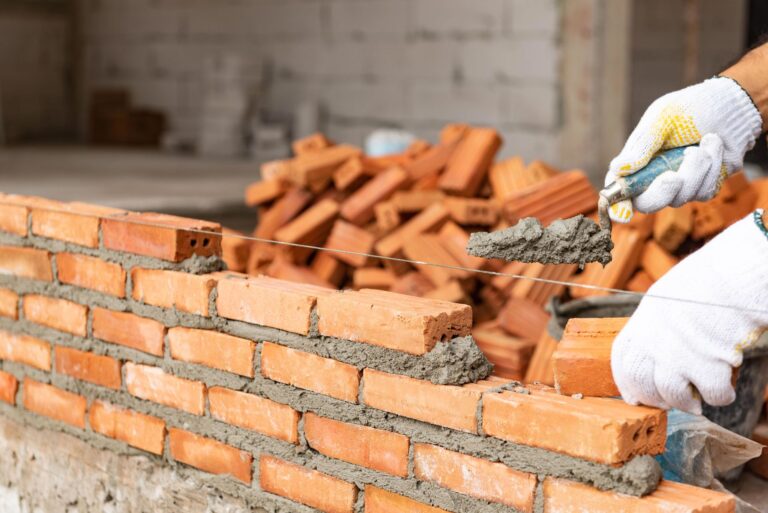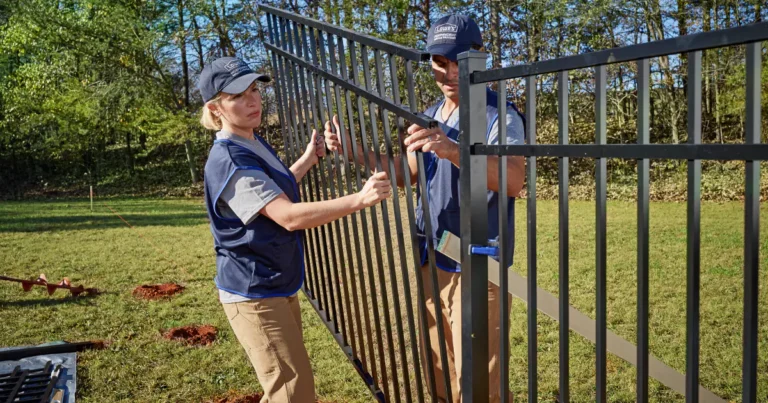7 Best AI Tools For Carpenters
Overview of AI Tools for Carpenters
The incorporation of Artificial Intelligence (AI) into the world of carpentry reflects a significant leap in technology and innovation. AI tools are reshaping the carpentry industry, from design to execution. Carpenters have traditionally relied on manual skill and experience, but with the advent of AI, they now have access to tools that enhance accuracy and efficiency.
AI tools offer a broad spectrum of advantages such as automated measuring tapes and self-adjusting wrenches that streamline carpenters’ workflows. They are designed with the user in mind, often requiring minimal expertise to operate. Through personalized recommendations, AI solutions like the Mouldings and Profiles Selection AI tool simplify complex choices based on project specifics.
- Precision is one of the key benefits, as AI tools can perform complex calculations and measurements, reducing the margin of error.
- Safety is enhanced, with AI systems capable of anticipating potential hazards.
- Efficiency sees an uptick as AI tools can automate tasks like cutting and fitting, saving time and resources.
The predictive maintenance for carpentry tools is another critical feature, preventing downtime and prolonging tool longevity. Updating inventory through AI-powered systems streamlines the management of resources, ensuring carpenters have what they need when they need it.
In summary, AI in carpentry not only supports the functional aspect of the job but also opens up a realm of creative possibilities, allowing carpenters to bring more intricate and precise designs to life. With these intelligent tools, the future of carpentry looks robust, embracing the synergy of age-old craftsmanship and cutting-edge innovation.
Design & Planning with AI
In the realm of carpentry, utilizing AI for design and planning marks a significant leap forward in efficiency and precision. These advancements empower carpenters with features that enhance the planning process and elevate the quality of craftsmanship.
AI-Driven Design Software
AI-driven design software is transforming the woodworking industry by enabling carpenters to create intricate 3D models with remarkable accuracy. For instance, automated CAD/CAM systems greatly aid in the design phase by allowing for rapid prototyping and complex designs that would be difficult to achieve manually. Such software often includes generative AI features, which can propose multiple design variations based on specified parameters, considerably boosting productivity and creative output.
- Key Features:
- Rapid prototyping
- Generative design algorithms
- High precision and accuracy
Cutting-Edge Planning Optimization
When it comes to planning optimization, AI tools integrate advanced algorithms to streamline the construction scheduling and project management aspects of carpentry. These tools analyze a multitude of data points to optimize cut lists, reducing waste and saving on materials. The software can also greatly enhance efficiency in woodworking by predicting project timelines and helping manage resources better, as seen with platforms that assist in visualizing end-results and optimizing material usage.
- Benefits:
- Minimized material waste
- Accurate scheduling predictions
- Enhanced project management efficiency
With the integration of AI into design software and planning tools, the field of carpentry is experiencing a shift towards more proactive and intelligent construction and woodworking practices.
Enhancing Construction Through Technology
In an industry ripe for transformation, artificial intelligence (AI) is pivotal in advancing the construction sector. It elevates precision, enhances safety, and drives sustainability, reshaping traditional carpentry into an innovative trade.
Smart Tool Integration
In today’s wood industry, the integration of AI with smart tools is changing the game. Carpenters can now utilize intelligent instruments like AI-enhanced tape measures and hammers that provide real-time data to ensure accurate cutting and joining. This technological evolution facilitates seamless automation processes within construction tasks, allowing for higher levels of precision and significantly improved efficiency.
- Example Tools:
- AI Tape Measure: Ensures exact measurements and reduces material waste.
- Hammer with Vibration Analysis: Increases safety by monitoring usage and suggesting optimal techniques.
Material Analysis and Selection
AI is revolutionizing the material selection process in construction. A ‘Wood Selector AI’ can analyze and recommend the best type of wood for a project, considering factors like strength, aesthetic, and wood moisture content. This not only aids in conserving resources but also enhances the sustainability of projects. AI systems are capable of minimizing material waste by providing precise cut lists and layouts before the initial slice into the wood.
- Benefits of AI in Material Analysis:
- Predictive Inventory Management: AI algorithms predict the need for resources, optimizing inventory management.
- Wood Moisture Control AI: Monitors lumber to ensure optimal condition, mitigating warping and shrinking.
Incorporating these technologies into carpentry practices promotes a safer environment, more judicious use of materials, and a proactive approach to the management of valuable inventory. The construction industry continues to transform as these digital innovations propel carpentry toward a more advanced and sustainable future.
Operational Efficiency and Maintenance
In the realm of carpentry, incorporating AI tools boosts overall operational efficiency and ensures equipment is maintained effectively. These tools help carpenters not only in managing their workflow but also in keeping their machinery in peak condition, thus improving productivity and reducing downtime.
Predictive Maintenance Systems
Predictive Maintenance Systems utilize machine learning algorithms to analyze data and anticipate maintenance needs before issues arise. In carpentry, such systems can save significant costs by preventing machine breakdowns. For example:
- Features: These systems often include real-time monitoring of equipment condition, alert notifications, and automated scheduling for maintenance tasks.
- Efficiency: By predicting equipment failures, carpenters can avoid unexpected downtime, thus enhancing the reliability of their operations.
Workflow and Resource Management
Workflow and Resource Management tools powered by AI optimize the allocation of resources and improve the management of daily tasks. Key aspects include:
- Inventory Management: AI assists in tracking materials and tools, ensuring that inventory levels are maintained, and aiding in cost estimation, which contributes to more accurate budgeting.
- Time Tracking: Advanced time tracking helps carpenters monitor time spent on different projects, allowing for better planning and resource allocation.
- Data Analytics: Leveraging data analytics, these tools offer insights into workflow patterns, helping to identify areas for improvement in the carpentry process.
By integrating these AI-driven tools into their craft, carpenters can achieve a higher degree of automation and productivity, leading to a smarter, more efficient crafting experience.
Quality Control & Finishing
In the world of carpentry, the final quality of construction and woodworking projects is paramount. Advanced AI tools elevate craftsmanship to new levels of precision and accuracy, ensuring a flawless finish with reduced manual effort.
AI-Assisted Quality Assurance
AI technology in the realm of quality assurance ensures that standards of craftsmanship are adhered to meticulously. Tailored algorithms analyze woodworking projects, detecting inconsistencies and recommending corrections. For instance, Wood Selector AI assists carpenters in choosing the right type of wood for specific projects, optimizing for quality and durability. Similarly, Wood Moisture Control AI helps in maintaining the ideal moisture level of wood, crucial for long-term quality and stability.
Automated Finishing Techniques
Automation in finishing techniques, such as sanding and applying sealants, leads to a uniform and flawless finish. Automated sanding machines, guided by AI, adjust the pressure and motion based on the wood’s grain and hardness, allowing for a smooth, even surface every time. Moreover, resources such as the Essential Carpenter Tools for Precision & Efficiency provide insights into the latest tools which complement AI advancements, further enhancing the quality of the finishing process. These innovations streamline the woodworking process significantly, manifesting precision in every stroke and coat.
Customer and Business Management
Incorporating AI into carpentry business operations revolutionizes customer interactions and sharpens business intelligence, reinforcing both productivity and competitive advantage.
Enhanced Client Communication
Artificial intelligence equips carpenters with a range of tools for improving client communication. Software employing AI, such as chatbots, can offer instantaneous customer service, addressing inquiries and providing quotes 24/7. These AI-powered communications systems contribute to a user-friendly experience that increases customer satisfaction and loyalty.
AI-Enhanced Business Intelligence
AI also extends into business intelligence, where tools can analyze vast amounts of data to uncover insights about customer preferences and market trends. Carpentry businesses can leverage predictive analytics to make more informed decisions regarding investment and operations. The ability to anticipate market shifts ensures carpentry businesses remain agile and ahead of the competition.
Carpentry Innovations and Future Trends
The integration of advanced artificial intelligence and machine learning technologies is fostering significant innovations in the carpentry and woodworking industries, leading to enhanced sustainability, precision, and customization capabilities.
Adapting to Advanced Machine Learning
Machine learning algorithms have become essential in modern carpentry tools, greatly improving efficiencies and reducing wood waste. For example, wood waste management AI systems can analyze offcuts and help carpenters optimize their resource usage, significantly minimizing waste. These systems learn from vast datasets to provide carpenters with options that save materials and time. In another stride toward innovation, mouldings and profiles selection AI facilitates automated selection based on structural requirements and aesthetic preferences, providing personalized recommendations with improved accuracy.
Exploring AI in Woodworking and Beyond
AI-driven tools are no longer confined to the digital realm but are now tangible through augmented reality (AR) applications in woodworking and construction. AR glasses can overlay data directly onto the carpenter’s field of view, offering precise measurements and guidelines, thereby enhancing both safety and productivity. In terms of sustainability, AI is instrumental in monitoring and managing environmental impact associated with construction, offering insights on sustainable practices. Beyond traditional applications, generative AI is pioneering the way for innovative designs in woodworking, allowing creatives to explore complex patterns and shapes that would be challenging to conceptualize manually. These advancements herald a new era where technology and craftsmanship converge to push the boundaries of what’s possible in carpentry.
Marketing and Outreach
In today’s competitive landscape, carpenters can leverage artificial intelligence (AI) to revolutionize their marketing and outreach efforts. AI enables enhanced communication, streamlines workflows, and offers tailored customer-centric solutions.
Social Media and AI Integration
Carpenters are now embracing AI to integrate with social media platforms, optimizing their online presence and engagement. AI tools can analyze trends and tailor content to the interest of followers, ensuring that posts about personalized wood suggestions or custom furniture reach the appropriate audience. These tools also automate repetitive tasks, allowing carpenters to focus on their skilled work within carpentry.
Job Market and Professional Development
The job market and professional development for carpenters have been transformed through AI. Platforms that utilize AI can deliver targeted job posts and industry news, as well as recommend articles for skill advancement. These resources are not only user-friendly but also cater to individual learning paths and professional growth, keeping carpenters at the forefront of advancement within their trade.
Customer-Centric Product Offerings
AI enables carpenters to provide customer-centric product offerings with tools that suggest personalized wood options and designs for custom furniture. Enhanced client communication systems powered by AI allow for a clearer understanding of client needs, elevating the standard of communication and service delivery.
Frequently Asked Questions
In the evolving field of carpentry, AI tools are becoming pivotal for efficiency and precision. This section answers key queries on how these tools are shaping the industry.
What are the leading AI tools for enhancing efficiency in carpentry?
Leading AI tools designed for carpentry, such as AI tool suites for woodworking, are transforming the craft with functionalities like material optimization, project management, and automated design processes.
How does AI contribute to precision and design in woodworking?
AI contributes significantly to precision and design in woodworking by utilizing algorithms to analyze designs, suggest material cuts, and optimize the fabrication process, resulting in higher accuracy and reduced waste.
Can AI software assist in construction drawing interpretations for carpenters?
Certainly, AI software can assist carpenters in interpreting construction drawings, by automatically converting them into detailed 3D models and providing a comprehensible visual for better understanding and precise execution of projects.
What free AI tools are available to support architects and carpenters alike?
There are free AI tools available that support both architects and carpenters by offering capabilities like design analysis, materials estimation, and collaboration platforms to streamline project workflows.
How can carpenters utilize AI for more accurate construction estimating?
Carpenters can utilize AI for more accurate construction estimating by taking advantage of software that uses data analysis to project material requirements, labor costs, and timelines, leading to more precise budgeting and scheduling.
What functionalities do top AI construction software offer to professionals in the carpentry field?
Top AI construction software offers a range of functionalities to carpentry professionals, including real-time analytics, predictive maintenance, supply chain optimization, and the integration of IoT devices to monitor and improve craftsmanship.






